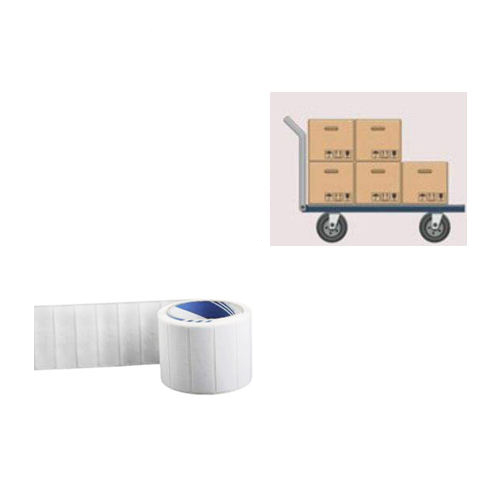
What Makes UHF RFID Stickers Ideal for Logistics Management?
UHF RFID stickers transform logistics with long-range, multi-item scanning, boosting inventory tracking and supply chain efficiency.
Have you ever noticed that every time you go shopping in the supermarket, you just want to buy a few necessities, but you end up checking out with a full basket? This is not a coincidence. In fact, from the display of goods in the supermarket to your walking route in the store, it may have been “quietly calculated”. And one of the key technologies is what we are going to talk about today – RFID labels/tags.
For a long time, grocery stores have been using a seemingly traditional way of placing goods: eggs, milk, bread, meat and other necessities are scattered around the store. When you buy these basic goods, you have to walk through other shelves, and you may also pick up a bag of snacks or drinks. This “detour shopping” layout is actually guiding customers to walk more and stay more, thereby increasing the chance of purchase.
Today, with the help of RFID tags and smartphones, merchants have become more accurate and “invisible” in guiding customers.
Take the research of Jeffrey Inman, a professor of marketing at the Katz School of Business at the University of Pittsburgh, as an example: he attached RFID tags to customers’ backpacks or clothes to track their actual walking routes in the supermarket, and analyzed them in conjunction with the pre-shopping plan and the final cashier records, and found a surprising result – every 55 feet (about 20 steps) a customer walked, he spent $1 more than originally planned.
More interestingly, when the supermarket pushed coupons to different customers through mobile devices, Inman divided the customers into two groups for testing:
In the end, the first group of customers overspent an average of $13, while the second group overspent as much as $21, a difference of 61%. This shows that as long as the customer’s route is slightly guided, their consumption amount can be significantly increased.
The core tool for these precision operations is UHF RFID labels. Their application has become more and more common and is widely used in retail, membership systems, event management and other fields. The following are common parameters of this type of RFID tag:
| Parameter | Value |
|---|---|
| Operating Frequency | 860~960MHz |
| Protocol Standard | ISO18000-6C / EPC Class1 Gen2 |
| Chip Mode | Passive (Battery-free) |
| Rewrite Cycle | Up to 100,000 times |
| Antenna Size | 70 x 14 mm |
| Overall Size | 73 x 18 mm (Customizable) |
| Material Options | Copperplate paper, PET, synthetic paper, thermal paper, etc. |
| Printing Method | Supports color printing |
| Operating Temp/Humidity | -25℃~50℃ / 20%~80% RH |
| Storage Conditions | +23℃±5℃ / 50%±10% RH (Avoid condensation) |
| Packaging | 1000~5000 labels/roll, 4 rolls/box |
| Sample Service | Free samples available for testing |
In addition to helping optimize customer traffic and improve sales conversion rates in supermarket retail scenarios, RFID tags are also widely used in:
In the retail industry where competition is becoming increasingly fierce and profit margins are being compressed, even if customers take a few more steps or stay a few more seconds, it may bring a significant increase in sales. RFID tag technology is a key tool to help businesses gain insight into customer behavior, scientifically adjust layouts, and conduct precision marketing.
So, next time you find yourself in a supermarket “inexplicably” walking into an area you don’t often visit, think about it: perhaps, it is a small RFID tag that is silently recording and affecting your steps.
Need to know more about the application cases or product parameters of RFID tags? Welcome to contact us for free samples and technical information!
Newest trends and common knowledge in RFID laundry tags.

UHF RFID stickers transform logistics with long-range, multi-item scanning, boosting inventory tracking and supply chain efficiency.

Dual Chip RFID Card combines contact & contactless tech in one card, ideal for secure payments, access control & multi-use smart card systems.

Radio Frequency Identification (RFID) uses radio waves for non-contact data exchange between readers and tags. It enables fast and durable bulk recognition without the need for contact.

As one of the top RFID Tag manufacturers in China, we specialize in high-quality RFID Tag and other RFID products designed to meet the diverse needs of various industries.
@ 2024 RFID Laundry Tag. All right reserved.
Didn’t find what you want? Ask our manager for help!